I’m glad you made time to learn about the sport you are going to do, unlike any uncivilized newbie. Impressive! God’s green earth needs more people like you, really!
I mean, this is serious! Because when you hit that snow with all that rage and power but end up getting a face-first fall, yet still get up to get that grace back, somewhere behind the trees, things don’t always go as smoothly.
Remember that selecting the right snowboard is entirely on you. It’s your judgment call. So, make sure with whatever you choose, you go above and beyond, just not so above as to the heavens yet. Remember? We need people well-lettered.
So, let’s go and read about important topics to cover while buying a perfect snowboard and snowboard padded shorts.
What Size Snowboard Should I Get?
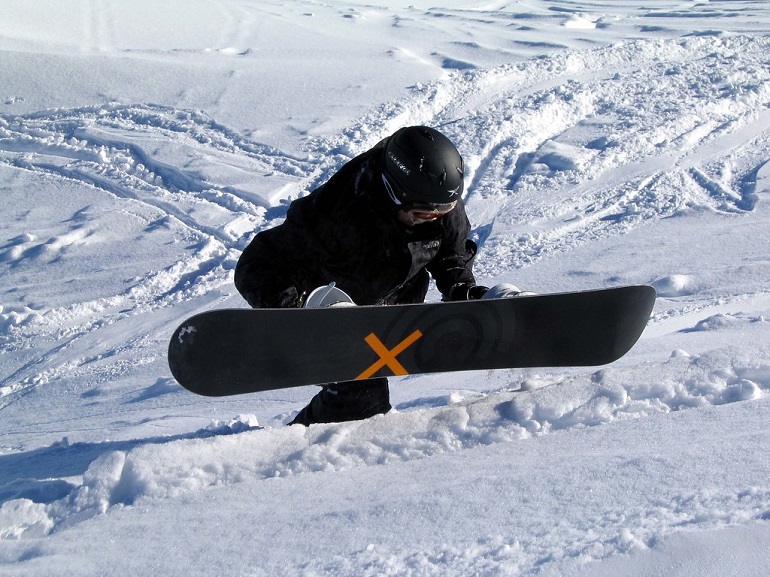
Let me start by asking you some questions. What is your ability level? What style do you want to explore, or what kind of terrain will you be riding? What is your weight? How Much Do Snowboards Weigh? And your personal preference?
Answering above mentioned queries will solve the mystery for you. Choosing a snowboard with a perfect snowboard brand is a painstakingly difficult task, especially when you are a complete novice. You need to educate yourself on snowboarding before spending your money.
There are a handful of significant aspects one must consider before buying a snowboard, like a snowboard length and snowboard width, and why they matter. Which I have tried to cover in this article. Below are mentioned some quick tips for beginners, read on to find more.
Quick Tips
- If you are a beginner, opt for a continuous rocker or hybrid profile boards.
- Being a newbie, you are recommended to go for a shorter board in your size range.
- If you are above average weight, consider a longer snowboard length.
- A soft or medium-to-soft flex will do the work for beginners (1 to 4 out of 10). If you are an intermediate or advanced rider, your style, weight, and ability will do.
- If you go too long, the longer boards will rob you of control, and it will result in hard turn initiations. But if you go too short, you will lose stability as it will feel twitchier. So, aim for a shorter board in your size range, 3 to 5 cm shorter will do.
- If you can handle the snowboard effectively and you aim to ace all-mountain style or freeriding, consider a longer board.
- If you are riding the park or prefer freestyle, choose a board on the shorter end of the size range.
What Length Should My Snowboard Be
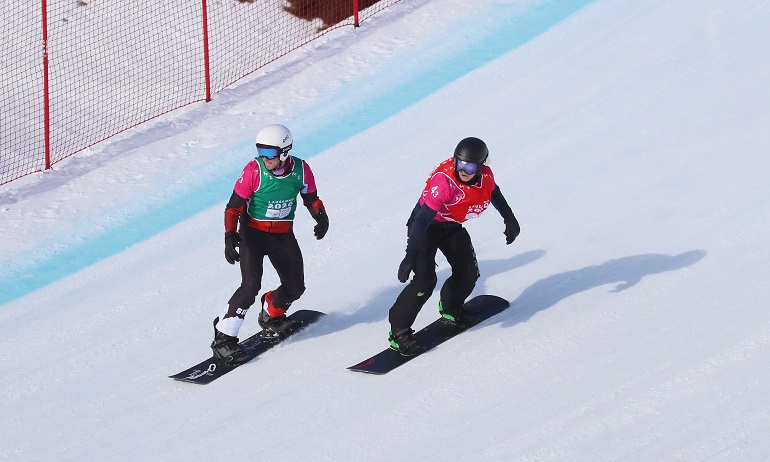
The length of your snowboard highly depends on your body weight, ability, and riding style you plan to go for. Weight? Indeed, the most important factor. The top snowboards are designed with a specific flex in mind, which is influenced by the weight of the rider.
To take an example, if the board length is too short and you are Kris Humphries with significant weight, the marriage will come to an end, as the board will start flexing more than it should. Similarly, if you are too light for the board, you won’t be applying the much-needed pressure to make the board flex. Total failure!
Another one, if you plan to go free riding the steep terrains, the deep snow, jumping your way to your destiny, the irony is, you are equipped with a shorter soft flex board, but you are beating Roman Reigns in weight.
I’d happily sing ‘Going down for real’ by Flo Rida in the background. Please don’t give me that look, you deserved it. Kidding! You deserve an Oscar.
Now pay heed when I say that if you are a newbie to freeride style, try an appropriate board length, i.e., a slightly longer board with a medium flex, especially if you are giving competition to WWE athletes.
Generally speaking, longer boards offer buoyancy and more stability at higher speeds. Shorter boards tend to be more forgiving and have to offer a very playful ride with less swing weight for turning and spinning. If we talk about flexes, a stiffer flexing board easily supports heavy weight riders than a softer flex board of the same size.
So, before buying a longer or shorter board, you better know your style, your weight, and your ability level. And stay within your limits, I mean, the rider weight range. You can also take help from the table given below, as it will be better to start from the recommended weight range.

Your ability level also partakes in your decision regarding the perfect board for you, as all snowboards are designed for all ability levels and to address different riding styles and terrains. Be brutally honest with yourself while assessing your skill level, otherwise, even if you set low standards as a newbie, you may consistently fail to achieve even them.
How Wide Should My Snowboard Be?
The waist width of the snowboard refers to the width of the board’s middle area, or you can say what falls between your feet. It holds significant importance because you are supposed to mount your boots on snowboard bindings over or around that area encompassing binding inserts.
You need not worry if your boots slightly hang 1-2 cm over the edges of the snowboard you have just bought because extending your feet a tiny bit over the edges allows you to apply leverage to the board. Not to mention, if your feet hang too far over the edge, it will probably force you to spend time in the lounge of a health center.
If you have a larger foot and the snowboard features a narrower waist width, that’s not your buddy, as it may cause toe and heel drag. Similarly, for smaller foot sizes, it’s not good to have a board that’s too wide, as it will result in slower edge to edge and arduous turn initiation. And I see fun leaving the chat room.
To conclude, your cool snowboard boots must complement your snowboard width. To steer clear of confusion, you can refer to the table given below.
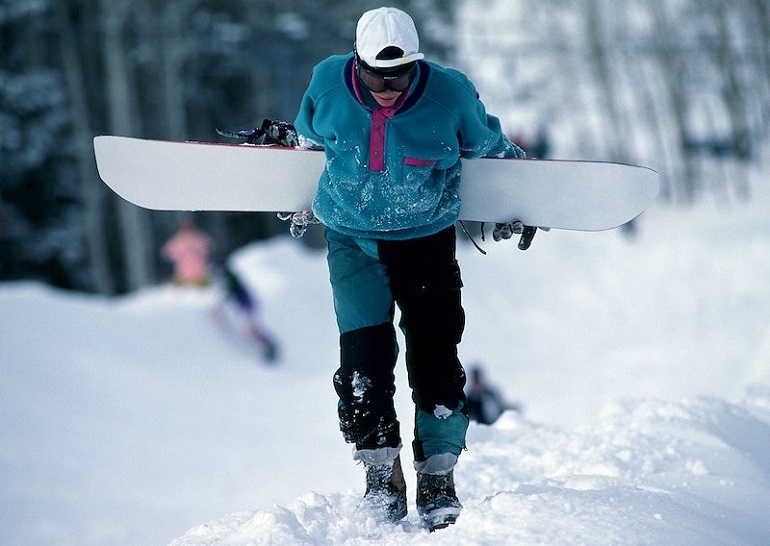
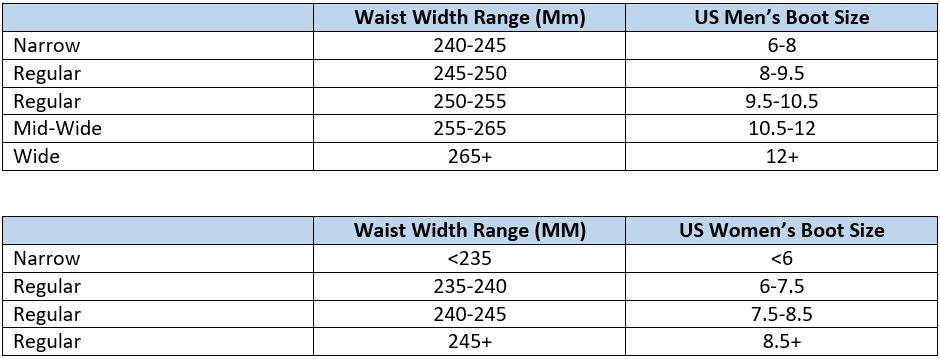
Types of Snowboards
For your help, I have put snowboards into five categories. Now it is over to you to find the right type of board for the style you are going for.
All-mountain
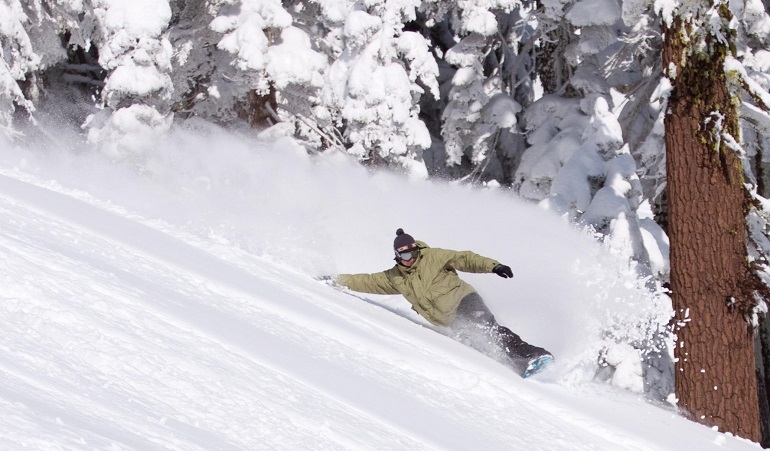
All mountain boards can tackle any terrain and conditions. They are designed to do a bit of everything. Owing to that fact, aspirants of such style desire one board to do everything on.
This type of board can be very cooperative to a broad range of styles which includes; slashing powder, backcountry, riding uneven terrains, grooming trails, or cruising the terrain park. In short, it can nail just about everything.
So if you are a beginner, I would recommend you to use an all-mountain board and this particular riding style, as such boards mostly possess medium flex. Being a beginner, your first task also involves finding your favorite terrain. Hence, riding all mountain boards will assist you in doing so, as with it, you can ride anywhere on a mountain.
Snowboarding has a fast learning curve, one needs to keep in sight the ultimate target and tap into the snowboarding world like you are up for whatever comes your way. A medium flexing board can neither prove too soft, eventually hindering progress, nor too stiff to hamper every next move.
These types of boards are mostly directional boards (they can be ridden in one direction only), or directional twin boards (they can be ridden in either direction as they are designed to ride switch).
Freestyle
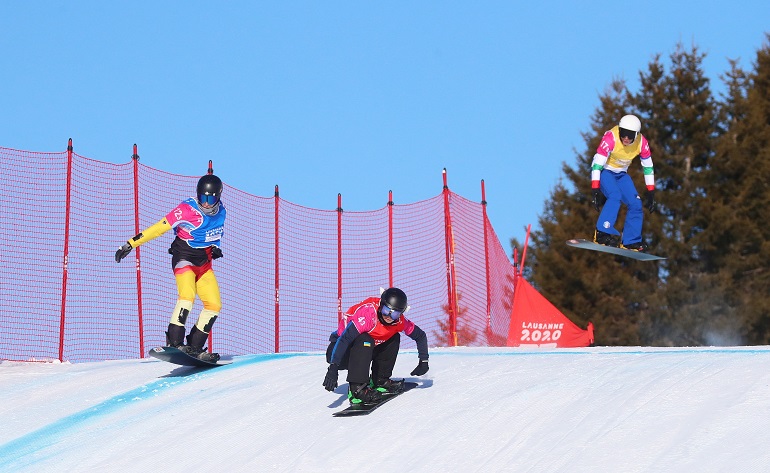
Freestyle snowboards flex the perfect combination of short length and mostly softer flex. Why soft flex? Because freestyle riders tend to get creative with performing tricks and stunts. They are in love with jibs, trash cans, tree trunks, and wall rides.
Freestyle boards are suited for sliding on rails, spins, buttering the snow, and much more, all for a playful ride in and out of the park. Although, for flips and jumps, stiff flex boards are also used by many riders. The shape of the board is mostly true twin for riding switch, and sometimes asymmetrical. Such boards are not so suitable for stability or cruising fast.
A modified version of it is the all-mountain freestyle board which combines the versatility of an all-mountain snowboard with a playful freestyle board.
Freeride
Best for ungroomed snowy terrains, freeride boards are often made directional by snowboard manufacturers. The reason why it is so is that they are meant to be ridden with one end always facing downhill.
Freeride snowboards tend to be aggressive with their stiffer flex and bags of stability. So if you are looking for stability at higher speeds, deep snows, and steep terrains, a freeride snowboard must be your pick. Freeride boards boast longer sizes, which enhance their ability to carve groomers and ride off-piste (backcountry).
Snowboarders who are looking for a chance to throw caution in the air consider freeriding as they don’t care a hang about the park. They just fancy exploring the whole mountain for hindrances, like cliffs, trees, and chutes are their friends.

Powder
Are you after intense floatation on the mighty snow? If yes, powder snowboard has got your back! Riders living for deep stuff are welcome here.
On powder days, the powder fanatics pull out their snowboards specifically designed for these days, set their stances, and leave for exhilarating rides. Such boards encompass a wider nose for better floating, a narrow and tapered tail, and sometimes feature a generous rocker.
Such a profile makes it possible to float on the snow as you do on the water surface. Usually, rocker rise starts farther back on the board’s tip and tail.
But do remember, the best powder snowboards cannot be ridden well anywhere other than powder. So riders often own two boards so they can ride mountains when there is no powder.

Splitboard
Are you up for uphill traveling? Best splitboards, with their ergonomic designs, permit climbing the untracked slopes of the backcountry.
The two split parts of the board are used as two skis to travel. One must be equipped with adhesive-backed climbing skins and special bindings to do so. Once you reach the top, you can reconnect the halves with the help of a split kit and ride downhill.
This adventurous snowboard demands a specific skill set, like appropriate avalanche safety skills and knowledge of snowy conditions, terrains, and weather.
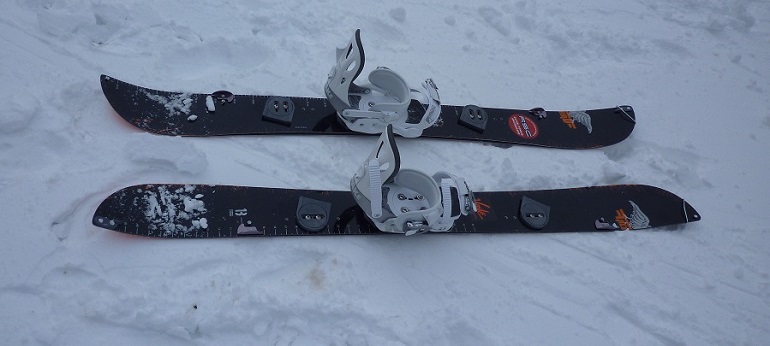
Snowboards by Gender and Age
Snowboard companies are offering multiple ranges for both men and women and even kids. Now stop stealing your spouse’s snowboard and start dangling yours before their eyes because you know you have got the best.
Women’s Snowboards
Women-specific boards are equipped with narrower waist widths to provide a suitable stance setup for this gender. The board is engineered in a way to match the stance and frame of a smaller person with smaller feet.
Women’s snowboards tend to have less camber and rocker and softer flex since a smaller person drives less energy into a board.
Well, now men need not worry about those flowers and feminine colors on their boards. Same goes for females, you don’t have to stand on a dull snowboard because snowboarding is a fun and recreational activity, not a pity party.
Okay then, ladies, follow this LINK to find some fascinating and functional beginner snowboards on the market.

Kids’ Snowboards
The little human also has its needs and demands. I know you don’t want to get rid of your money, but I also know you want your kid to be safe no matter how much you get pissed off at that small human sometimes. If your child is going snowboarding for the first time, you should also be aware of what to dress while snowboarding.
Before agreeing to buy a larger board, you think your kid can grow into, consider buying a suitable snowboard size. The correct size snowboard will force your kid to take more interest in this activity, otherwise, your kid will force you to stay home every time you plan to go snowboarding.
Kids’ snowboards are typically softer than adult boards. Hence, making it easier for them to learn to ride.

Snowboard Camber and Rocker
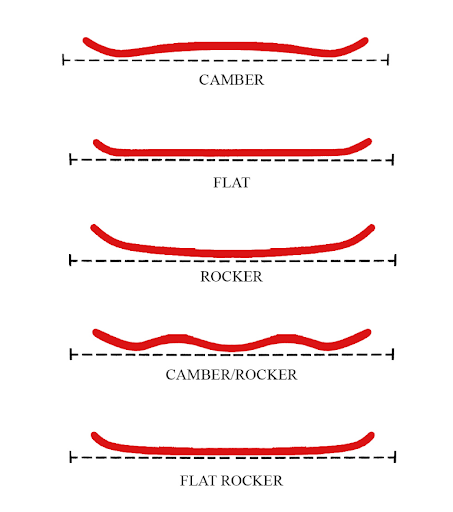
The shape of the snowboard hugely impacts your experience on the snowy terrains. A board’s profile refers to the shape of the board underneath your feet, which you can notice from the side. You can lay the snowboard on the ground in an edge-up position, and notice if the middle part of the board stays flat or rises off the snow, because that tells a lot.
Now let me introduce you to different snowboard shapes:
Camber
Camber refers to the profile arc of any snowboard. Camber profile offers a stable ride, better responsiveness, precision, lots of pop, and liveliness on groomed runs and hard packs. A cambered board has a rainbow-shaped profile. It provides the rider with many more contact points in comparison to its alternatives.
Snowboards with camber profiles provide the best edge hold as it distributes the rider’s weight evenly across the entire board’s length.
A full/traditional camber has a symmetrical camber throughout the board, and it offers the most stable ride. However, it is not ideal for beginners because the edges may feel more grabby when transitioning from toe to heel edge. If you want to explore powder avoid using a camber board, for it will not float well on the snow, ultimately you’ll get your face planted on the surface.
Flat
A neutral or no camber board is flat underneath your feet as it has no camber or rocker. This flat board doesn’t encompass any major contact points. These profiles assist you with making quick turns while increasing float.
Its flat surface enables a stable ride without being too aggressive. Like the traditional camber, it also tends to catch an edge. Flat profiles are good for hitting jibs, trees are its friends, and it also provides decent edge hold.
However, due to its flat surface and so much contact with the ground, such boards prove to be slower to ride. So, if you are riding for speeds, better buy a fast and furious board rather than a humble board like this.
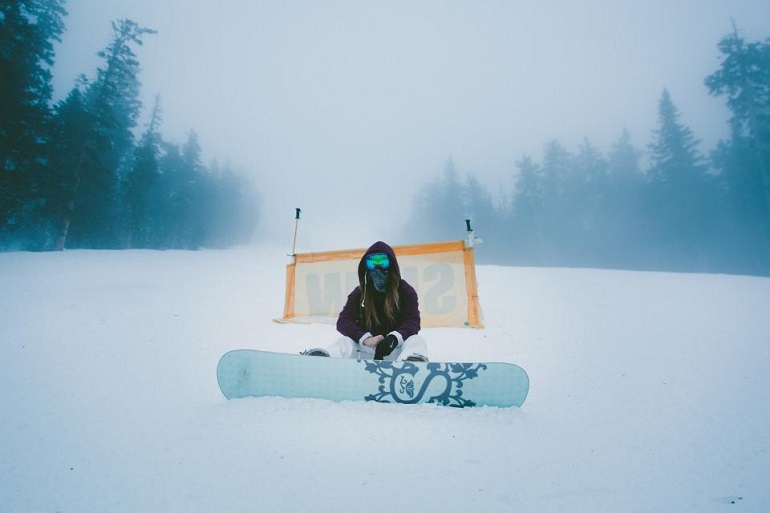
Rocker
It is also named as reverse camber for it possesses the same shape as a camber, but just an upside-down version. This profile makes the most forgiving boards out there one can find. Hence, have a lot of appeal for beginners. Since the board’s contact points are at the center of the board, the tip and tail are lifted off of the snow.
This capacity of the rocker board lets it float well and keeps it from grabbing or catching less on the snow. Believe me, such a board proves to be a good companion on deeper snow and pow days.
The trade-off is that these boards provide a looser feel (no pun intended), which may be too much for a beginner to handle. Moreover, it provides less pop but better turn initiations.
Camber/Rocker
With this hybrid profile, you can get the best of both worlds. This profile blends both camber and rocker profiles with the advantages of both. The camber towards the nose and the tail produces the kind of pop you get out of a camber profile board. Whilst the rocker between the best snowboard bindings gives it a looser feel and superior float in powder.
Such a do-it-all board is perfect for both the park and mountain, rendering it great for all skill levels. It is highly preferred by freestyle snowboard riders as it allows them to hold an edge on groomers and various terrains at high speeds.
Flat Rocker
A flat rocker profile features a flat middle section for a decent edge hold on hard snow and slightly rockered tips for easy turning and better float in powdered snow. Freestyle boards are usually equipped with this profile, giving competition to hybrid camber freestyle snowboards.
These flat profile boards usually have a softer flex or medium-soft and are suitable for beginners and intermediates looking for an easy ride. Park riders often choose a flat profile board for the consistent flat it provides. Freestyle riders also prefer to ride on these boards for their flat surface underneath your feet does fine for jibbing. The flat section also assists in stability for landing jumps.

Conclusion
Keep in mind that the right board is entirely a matter of personal preference, highlighted by your style and where you would be putting your focus while snowboarding. So better decide your focus and tell me, does it look like a skill set you want to achieve?
Anyway, I’m okay. Because I couldn’t care less, you are going to fall anyway.
So, try the type of boards I have mentioned, get riding, and remember, snowboarding is all about having fun. So express yourself freely!
As you slide down the mountain, embrace the smile that it puts on your face, just make sure you are not missing anything.
0 Comments